How To Choose The Correct Pond Pump
Choosing a pump for your pond or fountain is a crucial step to ensure you maintain proper water movement. Failure to keep the water adequately circulated can result in stagnation, algae buildup, and mosquitoes. In addition, if you have fish, plants, or other aquatic life in your pond, you must keep the water healthy by evenly distributing the oxygen levels and other nutrients.
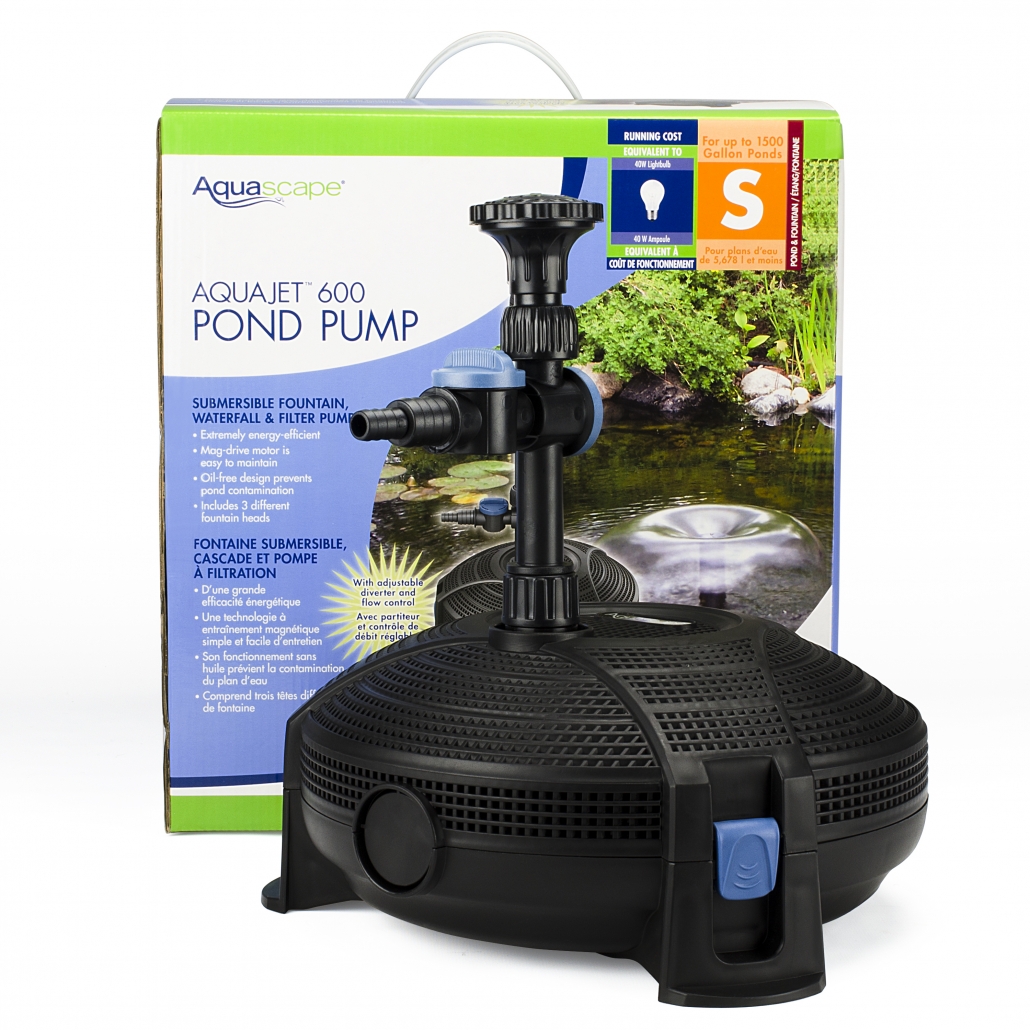
Types of Pond Water Pumps
There are two main types of pond water pumps: submersible and external (out-of-pond), also known as centrifugal pumps. Depending on the application, each pump offers specific advantages.
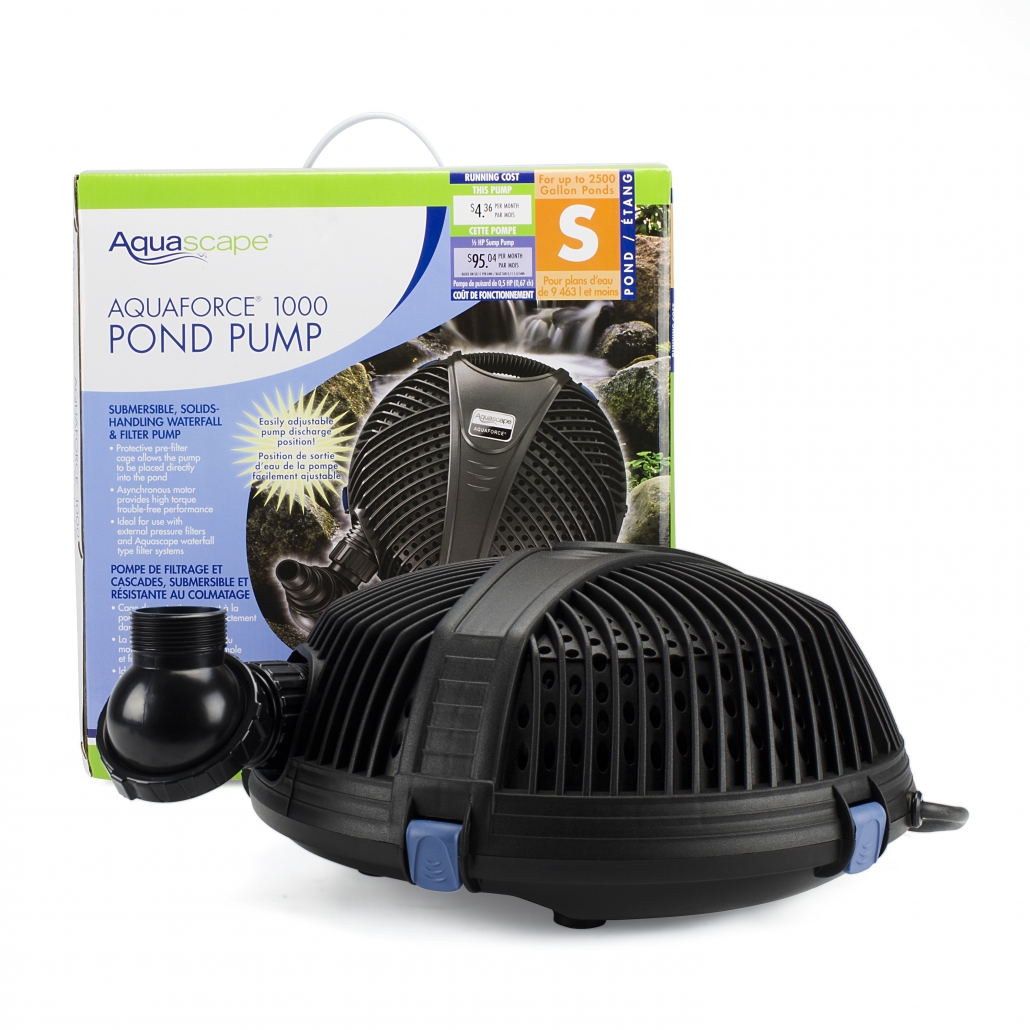
Submersible Pond Pumps
Submersible pumps are designed to be fully submerged underwater at the deepest part of the pond. They are placed directly into your pond or in a skimmer box or pond vault. Submersible pumps range in size from 50 to 5,000 gallons per hour. They are easy to install and are sometimes a more economical solution for smaller ponds (up to 1000 gallons of water). They are also quiet and can also be used to drain your pond. If you have fish or other aquatic life in your pond, you may want to consider a model that does not use oil because there is a danger of the pump seal breaking and oil coolant leaking into the water.
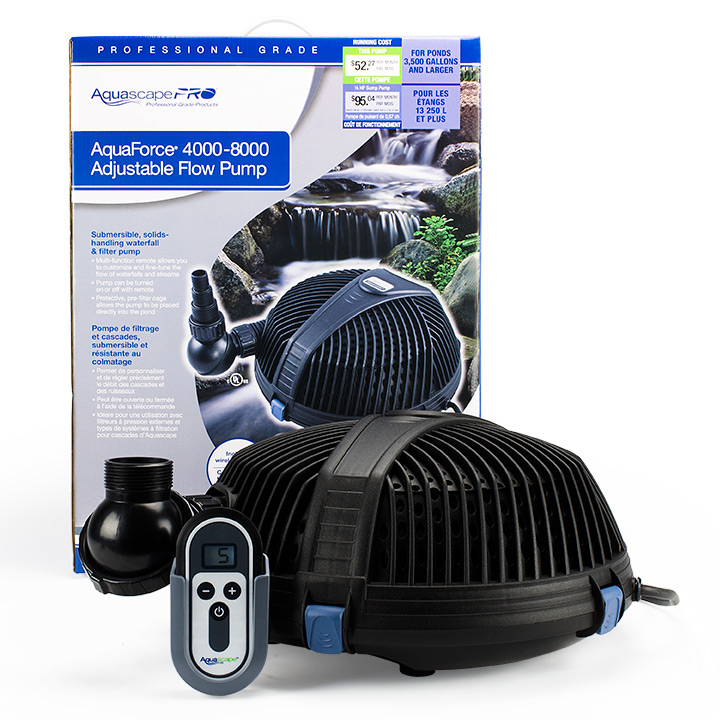
Centrifugal Pond Pumps
External or centrifugal pond pumps are a reliable, energy-efficient option. They are installed in a dry location near your pond. External pond water pumps are suitable for larger ponds (over 1000 gallons). Compared to a submersible pump, they are typically louder and more complicated to install; however, they are easier to maintain.
When selecting a pond pump, it’s essential to keep in mind that pumps have different cord lengths. Ensure the cord is long enough to go through the pond and plugin far away from the water. Some electrical codes specify that the outlet for water features must be at least 6 feet away from the water. Therefore, it is recommended that you avoid using an extension cord. However, if you must use one, make sure it’s suitable for outdoor use and plugged into a ground fault circuit interrupter (GFCI) so that it will immediately shut off if there is an overload.

How to Size a Fountain or Pond Pump
Pond pumps are sized by gallons per hour (GPH) at one foot of lift or height. Larger capacity pumps are rated by horsepower (HP). To determine the size pond pump, first, you need to calculate the volume of water in the pond. To calculate the volume of water in gallons, multiply the length x width x average depth x 7.5.
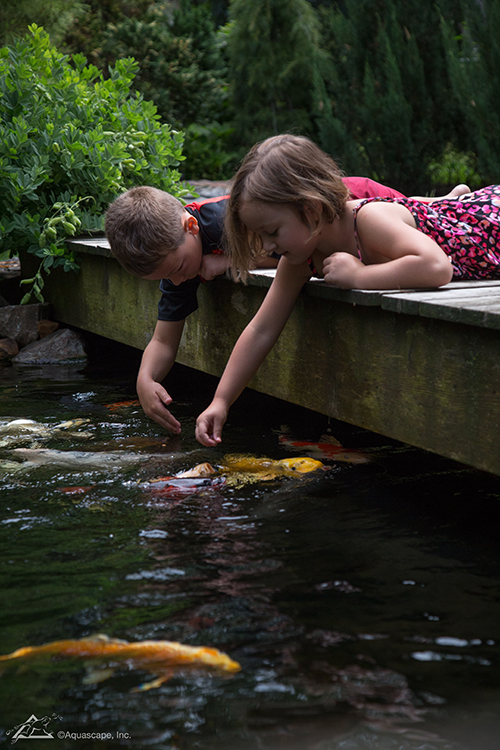
Water Circulation Factors
It is recommended that pond water is circulated at least once per hour. For example, if you have a 500-gallon pond, you need a pump that runs 500 gallons per hour at the discharge height. If your pond has a pressurized filter, you ideally want to turn the water approximately once every two hours. For example, if you have a 1000 gallon pond, you need a pond pump rated at a minimum of 500 GPH. If your pond has a skimmer or waterfall, the water should be turned approximately once every hour. Therefore, if you have an 1800 gallon pond, you will need an 1800 GPH rated pump.
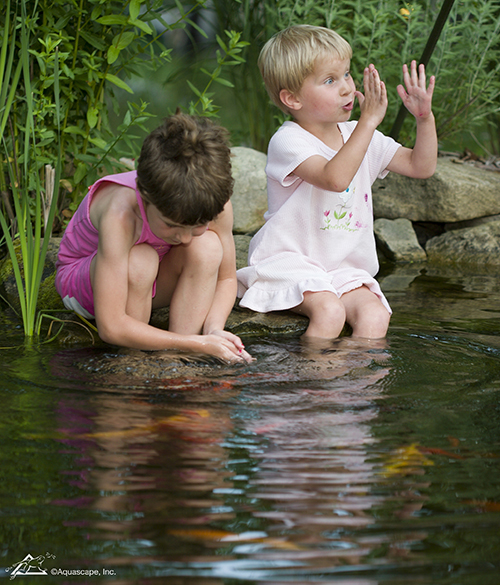
Calculating Head and Lift Height
Two of the most critical measurements in sizing a pond or fountain pump are the maximum head height rating and maximum lift. Head height means the vertical height the pump raises water above the surface of the pond. The pond fountain pump’s top height can lift the water to is called “Maximum Head” or “Max Head.” The “Head” is measured straight up from the water level of the pond. Its length then measures any horizontal/diagonal flow, and 1′ of “Head” added per 10′ of horizontal/diagonal distance. To calculate the lift, you need to measure how far the water in your fountain has to travel from the pump’s location in your rush to the top of the fountain where the water comes out. Then you need to select a pump that lifts higher than that measurement. For example, if that distance is 24”, than you will need a fountain pump that lifts at least 36” tall. The “maximum lift” is the maximum height that the pump will raise the water.
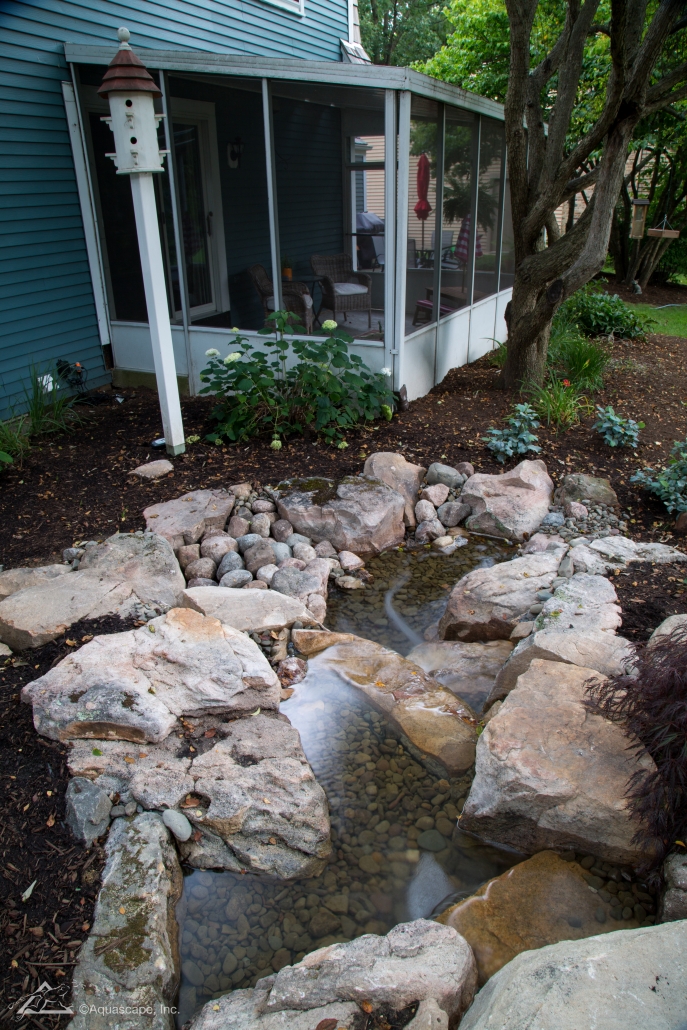
Selecting the Proper Pond Water Pump Tubing
It is also essential to use the correct tubing size because it directly affects the pond pump‘s maximum lift capability. If you use smaller tubing than specified, you will limit the pump’s maximum lift and the amount of water circulated.
Choosing the right pond water pump for your pond or fountain requires careful consideration and a little upfront research. However, doing so will go a long way toward keeping your water clean and healthy and your pump operating efficiently.
Water Spitters: Adding Dynamic Motion to Your Outdoor Oasis
Water spitters are an innovative and playful addition to any water garden, offering an exciting way to introduce dynamic motion and sound into your outdoor space. Unlike traditional fountains that create a steady cascade of water, spitters deliver rhythmic bursts that capture the imagination and add a whimsical touch to your landscape. Whether you’re looking to accentuate a garden path, highlight a seating area, or create a unique focal point, water spitters are a creative solution that combines functionality with artistry. 💦
The Unique Appeal of Water Spitters
Water spitters are designed to create intermittent, jet-like streams that mimic the playful splashes of water found in natural settings. These features can be tailored to produce anything from soft, sporadic droplets to more vigorous bursts that generate a lively, interactive atmosphere. This variability allows you to design a water display that perfectly suits your outdoor environment—be it a tranquil retreat or a vibrant gathering spot.
Enhancing Aesthetic and Sensory Experiences
One of the primary benefits of incorporating water spitters into your garden is the enhanced sensory experience they offer. The sudden bursts of water not only serve as a visual delight but also contribute to a soothing auditory backdrop. The sound of water splashing against a pool or garden bed can evoke feelings of calm and rejuvenation, making your space a perfect sanctuary from the hustle and bustle of daily life.
In addition, water spitters are highly versatile when it comes to design. They can be integrated with other water features like ponds, cascades, or even incorporated as stand-alone elements in a modern minimalist setting. Their compact nature means they can be strategically placed to create movement around larger, static water displays, thus adding depth and complexity to the overall design.
Practical Considerations and Installation
Installing water spitters is relatively straightforward, making them an attractive option for both new and existing water gardens. Most models are designed with energy-efficient pump systems, such as those from the Aquascape Ultra series, ensuring that the water spitter operates reliably while consuming minimal energy. These pumps provide the necessary pressure to create the desired spitting effect, and many systems allow for adjustable flow rates, so you can fine-tune the intensity of the water bursts to suit your design preferences.
Placement is key to maximizing the impact of water spitters. They work best when positioned to complement other features in your garden. For example, placing a series of water spitters along a winding stone pathway can create an inviting, interactive atmosphere that guides visitors deeper into your outdoor space. Alternatively, a solitary water spitter set against a backdrop of lush greenery can serve as a striking focal point that draws the eye and sparks conversation.
Sustainability and Maintenance
As with all modern water features, sustainability is a top priority with water spitters. Many models feature recirculating systems that minimize water waste and reduce the need for constant refills. Regular maintenance is simple—a periodic cleaning of the nozzle and pump is usually sufficient to keep the system running smoothly. This ease of upkeep, combined with the energy efficiency of the integrated pumps, makes water spitters an eco-friendly choice that enhances both the aesthetics and practicality of your outdoor design.
Water spitters add a dynamic and engaging element to any water garden. Their ability to combine artful design with practical functionality makes them a compelling choice for homeowners and designers alike. Embrace the playful yet sophisticated allure of water spitters, and let your outdoor space come alive with bursts of refreshing movement and sound—a true celebration of nature’s dynamic beauty. 😊
Nighttime Radiance: Illuminating Your Water Feature
Incorporating LED lighting into water features is transforming outdoor spaces into mesmerizing nightscapes. By using energy-efficient LEDs, you can enhance the beauty of your water installations while creating a magical ambiance that invites relaxation and wonder. Whether you have a serene pond or a dynamic fountain, LED lighting opens up a world of creative possibilities for night viewing. 💡
The Allure of LED Illumination
LEDs are a popular choice for water features due to their versatility, low energy consumption, and long lifespan. Unlike traditional lighting, LEDs produce minimal heat, which means they won’t interfere with the natural temperature of your water. This is particularly important for maintaining a healthy ecosystem within your pond or fountain. With a range of colors and intensities available, LEDs allow you to customize your water feature‘s look to match any mood or setting—from a cool, tranquil blue to a warm, inviting amber glow.
Enhancing Aesthetic Appeal
When the sun goes down, LED lighting transforms your water feature into a stunning focal point. Strategically placed LEDs can highlight the natural curves and textures of your installation, emphasizing the movement of water as it cascades or ripples across the surface. This not only creates a captivating visual display but also adds depth and dimension to your outdoor environment. For instance, under-lighting a waterfall can enhance its dramatic flow, while subtle lighting in a pond can evoke a peaceful, otherworldly atmosphere.
Creating a Dynamic Nightscape
One of the most exciting aspects of using LEDs in water features is the ability to create dynamic, ever-changing displays. Many modern LED systems allow for programmable color changes and light patterns, so you can tailor your water feature to suit different occasions or times of the year. Imagine a setup that shifts from a calming blue at dusk to a vibrant, multicolored show during a summer garden party. The interactive nature of LED lighting not only delights guests but also elevates the overall design of your outdoor space.
Practical Benefits and Sustainability
Beyond aesthetics, LED lighting is an eco-friendly choice. LEDs use significantly less energy compared to conventional bulbs, which translates to lower utility bills and a smaller environmental footprint. Their durability means fewer replacements, reducing both maintenance costs and waste. When paired with automated or sensor-driven systems, LED lighting can adjust its brightness based on ambient light conditions, ensuring optimal performance while conserving energy.
Tips for Integrating LEDs into Your Water Feature
- Plan Your Layout: Consider the design and focal points of your water feature. Decide where the LED lights will best highlight the feature’s curves, water flow, and surrounding landscape.
- Choose the Right Color: The color of the light can dramatically alter the mood of your space. Experiment with different hues to see which complements your water feature and garden best.
- Automate for Convenience: Integrate LED lighting with sensors or programmable controls. This will allow the lights to adapt automatically to changing light conditions, ensuring that your water feature always looks its best.
- Safety First: Use low-voltage, waterproof LED fixtures specifically designed for outdoor use to ensure durability and safety around water.
LED lighting inside water features is more than just a design trend—it’s a way to extend the enjoyment of your outdoor space well into the night. By embracing smart, sustainable lighting solutions, you can create an enchanting nighttime oasis that combines aesthetic beauty with practical energy savings. Let the gentle glow of LEDs enhance your water feature, transforming your garden into a luminous retreat where every evening becomes a celebration of light and water. 😊
Smart Water Feature and Pond Tech
Smart water technology is reshaping how we design and interact with outdoor environments. By integrating intelligent systems into water installations, homeowners and designers can enjoy enhanced functionality, energy efficiency, and a captivating aesthetic that adapts to your lifestyle. This forward-thinking approach not only elevates your landscape but also makes everyday maintenance effortless. 💧
Embracing Innovation in Water Design
At the core of smart water tech is the seamless integration of automated systems with traditional water features. Advanced controllers, remote connectivity, and sensor technology work in unison to adjust water flow, lighting, and even temperature based on real-time conditions. These innovations mean that your water feature can respond dynamically to changes—enhancing its performance during peak hours and conserving energy during quieter moments.
Key Components of Smart Water Tech
1. Advanced Control Systems:
Smart water installations are powered by programmable controllers that allow for precise adjustments in water flow and LED lighting. This customization lets you tailor the ambiance of your space effortlessly, whether you want a dramatic nighttime display or a gentle, soothing trickle during the day.
2. Sensor Integration:
Utilizing motion, light, and temperature sensors, smart water systems can detect environmental changes and react accordingly. For example, light sensors automatically adjust LED brightness as the sun sets, while motion sensors can activate water features when guests approach, creating an interactive and engaging experience.
3. Remote Accessibility:
Connectivity is a hallmark of smart water tech. With Wi-Fi-enabled systems, you can control your water features from anywhere using a smartphone app. This remote access allows you to monitor performance, schedule operations, and receive maintenance alerts, ensuring your installation always runs smoothly.
Benefits of Smart Water Technology
Energy Efficiency:
Smart water systems optimize performance by operating only when necessary. Energy-efficient pumps and LED lighting work in tandem with sensor-driven adjustments to reduce power consumption, making these installations both environmentally friendly and cost-effective.
Low Maintenance:
Automation minimizes the need for constant manual intervention. With self-regulating systems that adjust water flow and lighting based on real-time data, maintenance becomes less about constant tweaking and more about enjoying your outdoor oasis.
Enhanced Aesthetics:
Smart water tech brings a dynamic quality to outdoor design. Imagine a water feature that shifts its pattern or glows in sync with the rhythm of your day—each moment offers a new visual treat. This modern approach creates a captivating focal point that elevates the overall design of your landscape.
A Sustainable Future
Integrating smart water technology into your landscape isn’t just about modern aesthetics—it’s also a commitment to sustainability. By optimizing water usage and reducing energy waste, smart water features contribute to a greener, more sustainable environment. These systems exemplify how innovation can lead to practical, eco-friendly solutions that support both your lifestyle and the planet.
Final Thoughts
Smart water technology is transforming outdoor design into a harmonious blend of nature, innovation, and sustainability. With features that adapt to your environment and enhance your garden’s beauty, this modern approach offers a glimpse into the future of outdoor living. Embrace the power of smart water tech and let your landscape evolve into a dynamic, energy-efficient sanctuary that reflects the cutting edge of design. 😊

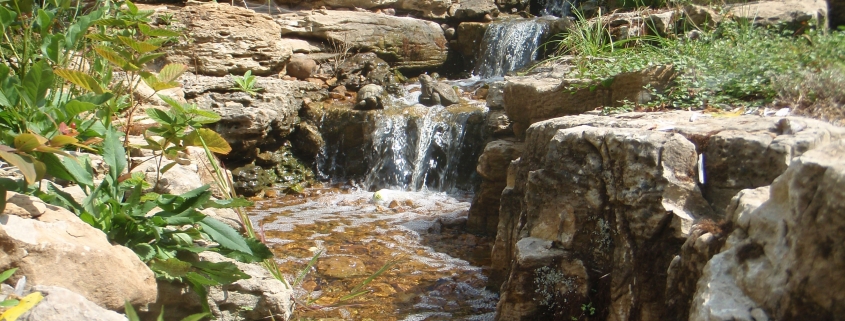 meyer aquascapes
meyer aquascapes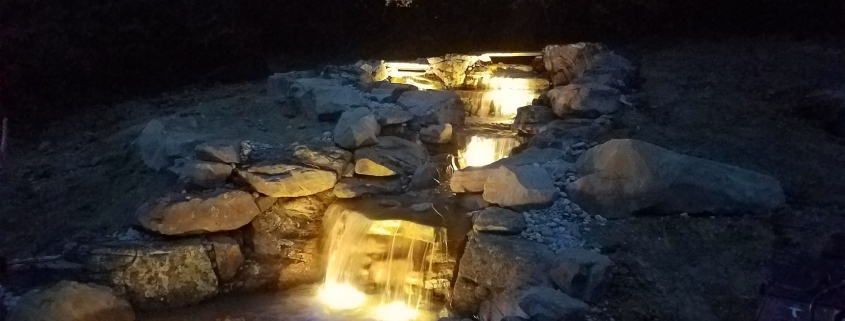 Meyer Aquascapes
Meyer Aquascapes

